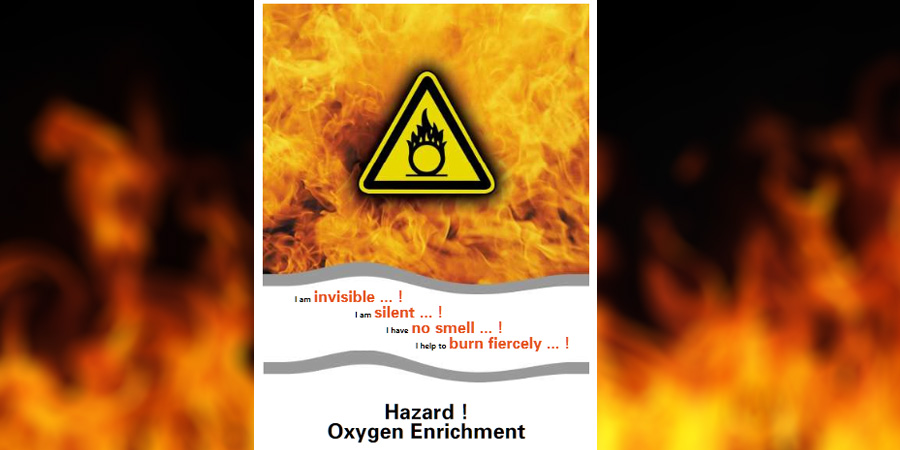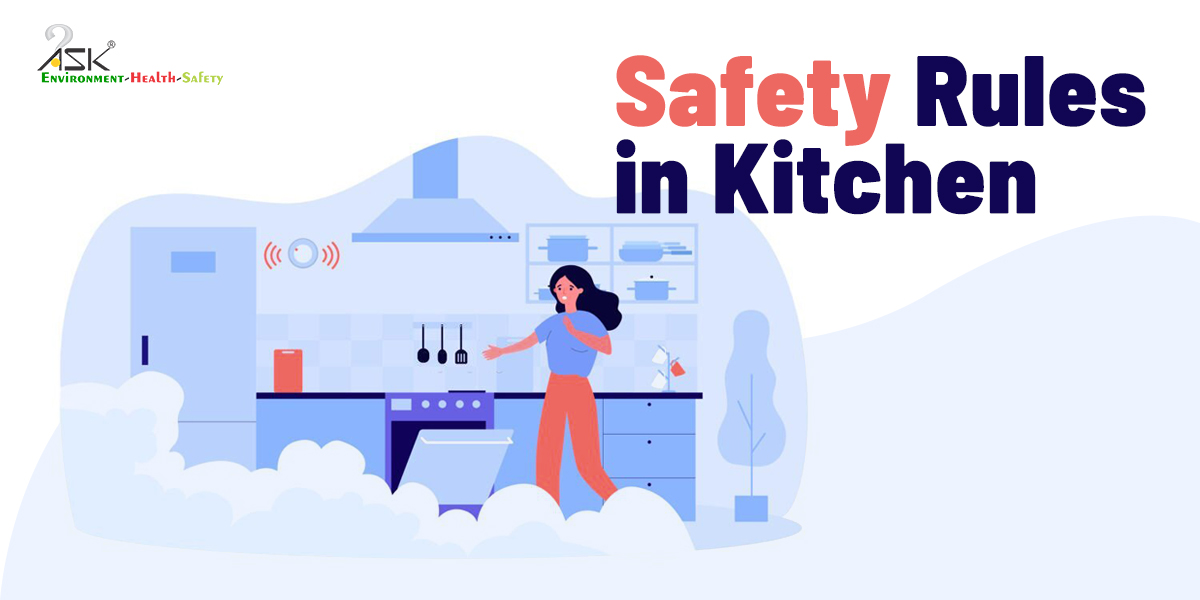Oxygen Enriched Atmosphere (OEA) – A Very Risky and Largely Unknown Situation

“OEA” (Oxygen Enriched Atmosphere), as technically known to the professionals, is commonly very unknown subject – since the general feeling is that oxygen, being our life-line and constantly being breathed by all aerobic creatures, is safe and healthy gas. But, when oxygen level goes above 30% in atmosphere, the combustion characteristics drastically change and several non-conventional materials also convert as fuel for the ensuing severe fire with no scope, time and speed left for extinguishing at all. Concentrated oxygen pipe-lines become highly hazardous, fire-intensive, installations.
Oxygen, as we all know, is the vital component in atmosphere for sustenance of life. The air we breathe contains about 21% of oxygen.
The approximate volumetric composition of air in atmosphere at or near sea level is as follows:
| Gas | Formula | % |
| Oxygen | O2 | 21% |
| Nitrogen | N2 | 78% |
| Argon & others | Approx. 1% |
A few peculiarities with OEA:-
Any kind of alterations, in the concentration of atmospheric gases, especially that of oxygen, has significant impact on life and combustion processes. It may be hard to believe but oxygen can also be precarious. The threats are fire and explosion. At high pressure, pure oxygen can react violently with common materials like grease and oil. Other materials like rubber, textiles and even metals can burn violently in oxygen. Even a small rise in the oxygen level in the atmosphere can create a havoc. That is why, emergency evacuation is ordered in confined spaces, tunnels etc. if oxygen percentage exceeds 23%.
A few highlights of OEA:-
- Even a drop of oil, lint or dust can cause fire. More hazardous is fine dust since their molecular rubbing generates more heat.
- Rapid opening of valve may be a factor in ignition either by producing heat from adiabatic compression or friction or by creating a static spark.
- Limits of flammability (explosion) is expanded as concentration of O₂ in atmosphere is increased.
- Flame spread rate is highly increased as O₂ concentration and environmental pressure rise.
- OEA accelerates corrosion process.
- All metals with the possible exception of noble metals (gold & platinum) can be expected to ignite in O₂ at some elevated temperature and pressure. The most combustible of common metals are titanium and magnesium; the least, nickel and copper. Most metals burn freely in OEA depending upon the pressure and concentration of O₂.
4 common types of ignition that may occur in OEA:-
(1) Electric spark
(2) Hot surfaces such as friction sparks or heated spot
(3) Heated gases, independent of surfaces, generated by adiabatic compression or jets of hot gas and
(4) Exothermic chemical reaction
If proper safety measures are not followed accidents might occur as changes in oxygen concentration is not detected easily by human senses. Although oxygen, in itself, is not combustible but it violently supports combustion in OEA.
Required safety steps to be taken:-
- Be attentive of the dangers associated with oxygen, if in doubt always ask technical experts
- Never use materials which are not compatible with excess oxygen
- Take extra care while using oxygen cylinders, equipment and its various installations
- Prevent oxygen enrichment by ensuring that equipment in use is leak tight and in good working condition
- Always ensure that ventilation is adequate
- Make sure that oxygen is not used in equipment which are not designed for oxygen service
- Never open oxygen cylinder valves in a hurry
- Smoking should be strictly prohibited in areas where oxygen is being used
- Never use lubricating agents like oil or grease to lubricate oxygen equipment
- Do not use oxygen equipment beyond the pressures certified by the manufacturer
- Never use replacement parts which are not recommended or approved for oxygen service
Beware of Oxygen
Safe handling of oxygen is only possible if workforce are attentive of its specific properties and uses. Inappropriate use of oxygen can lead to fatalities.
Although, oxygen has neither good nor bad properties. What matters is the knowledge and awareness of how to use it in the right way.
Would you like to share your views? Send us your comments and suggestions.



Very useful information about OEA but if any incident related to this would be helpful to learn lessons.